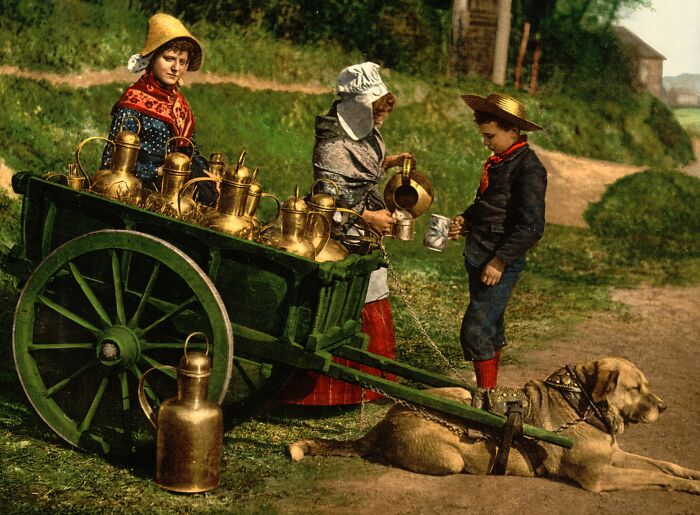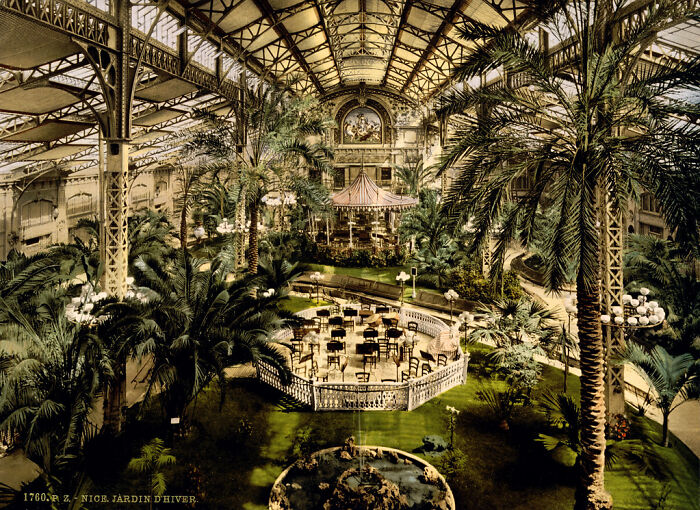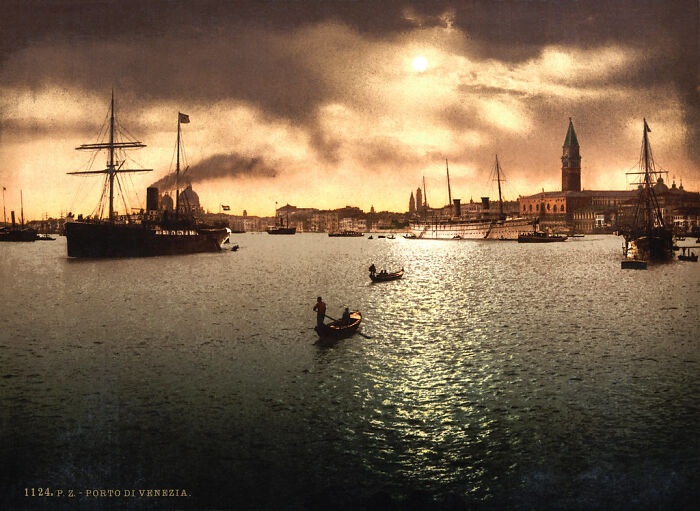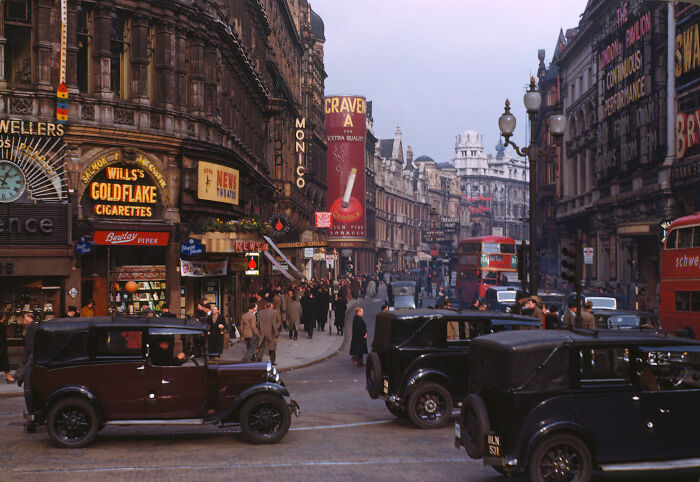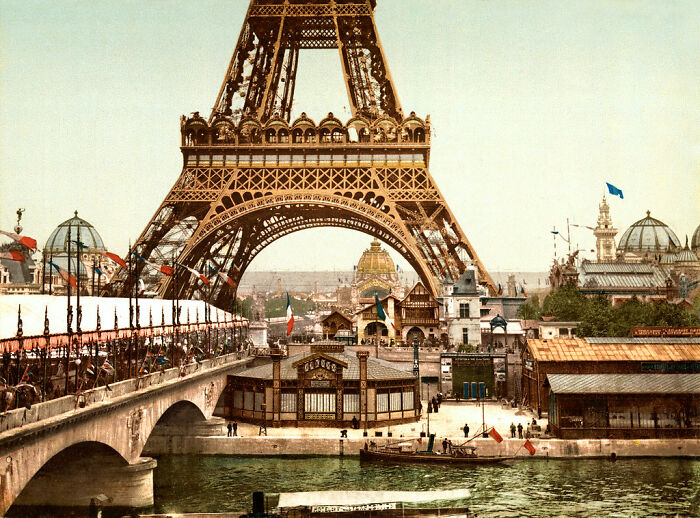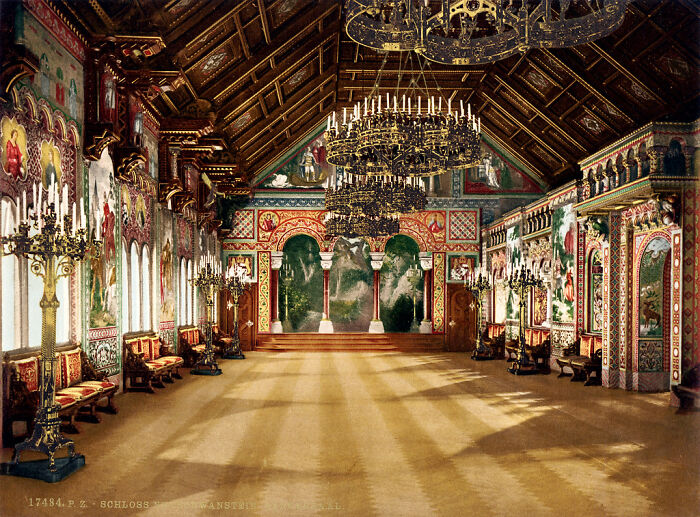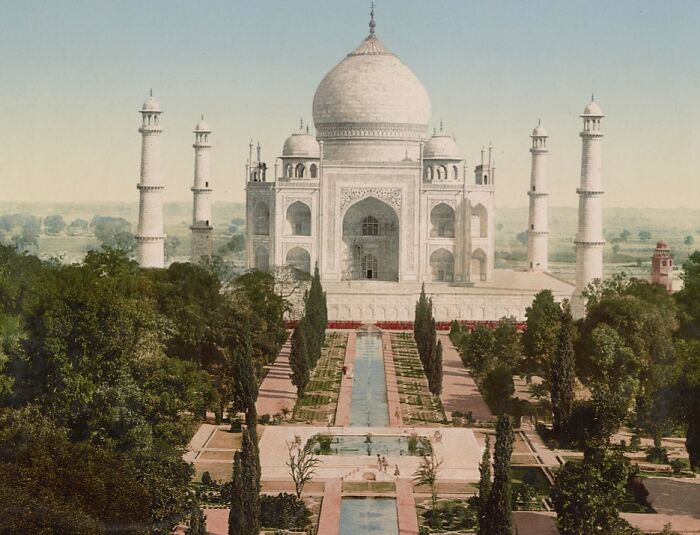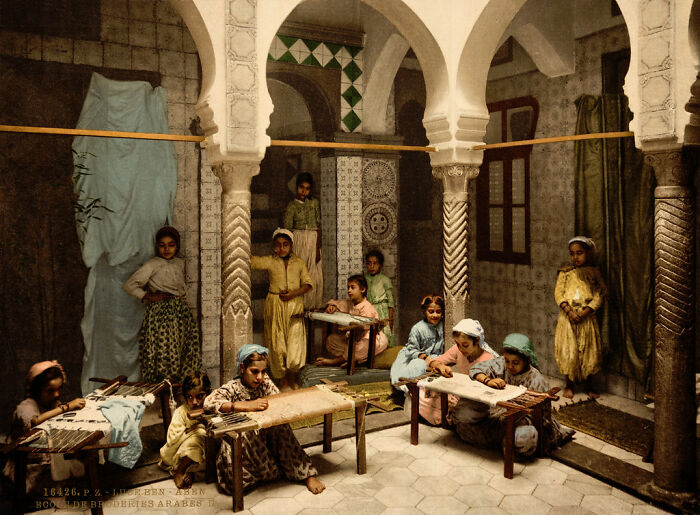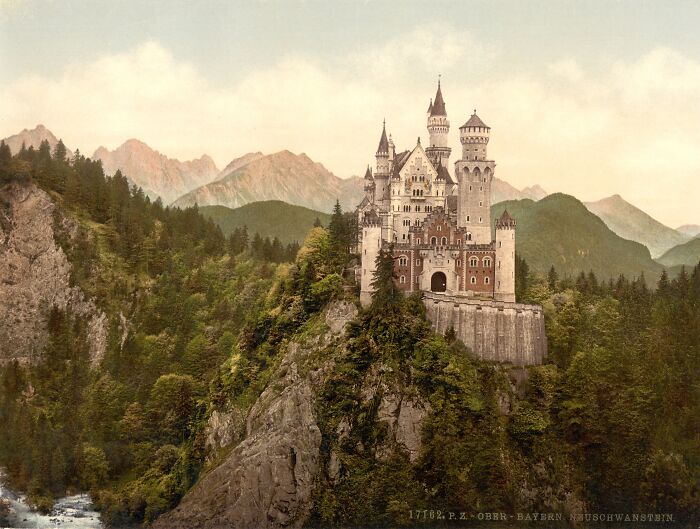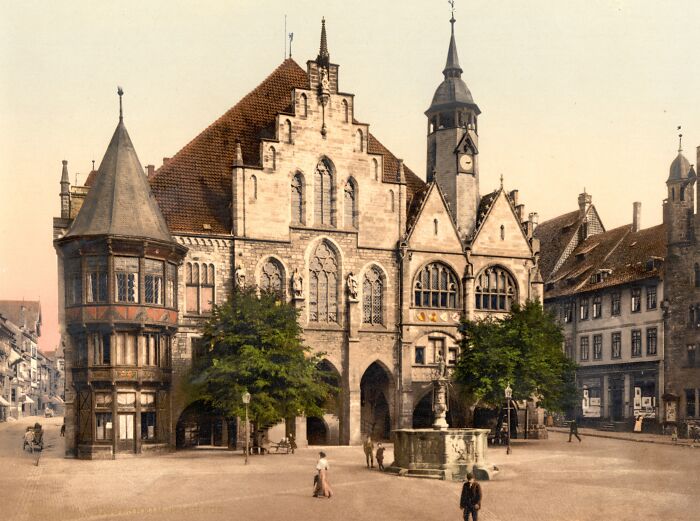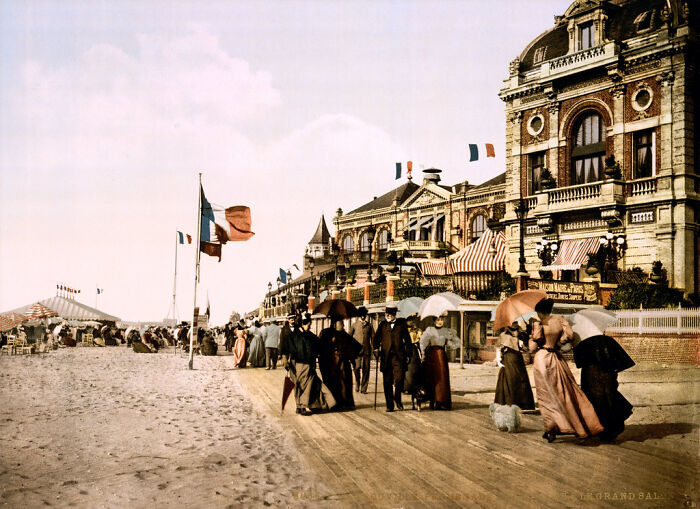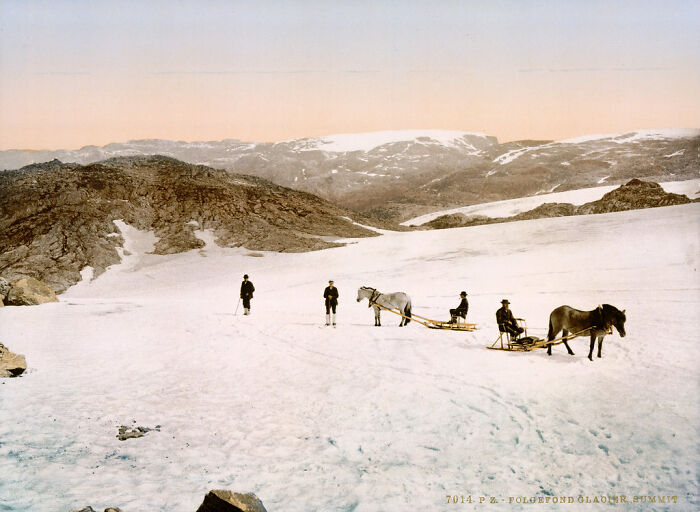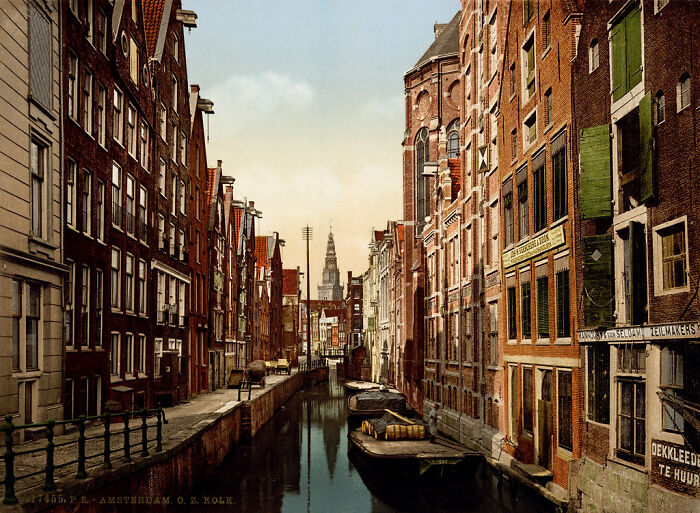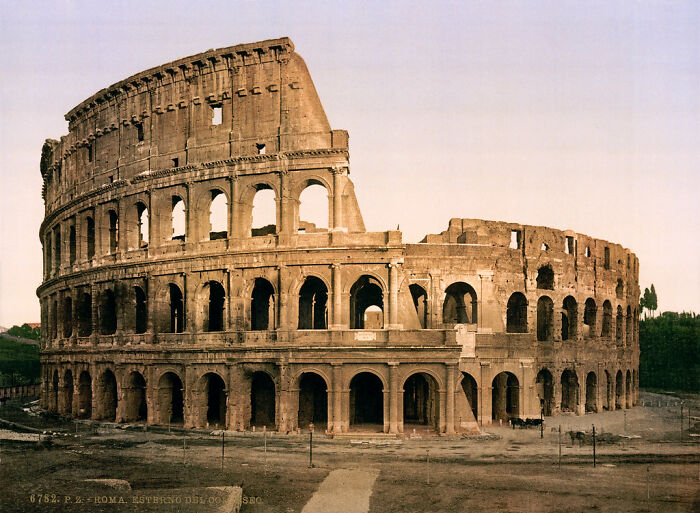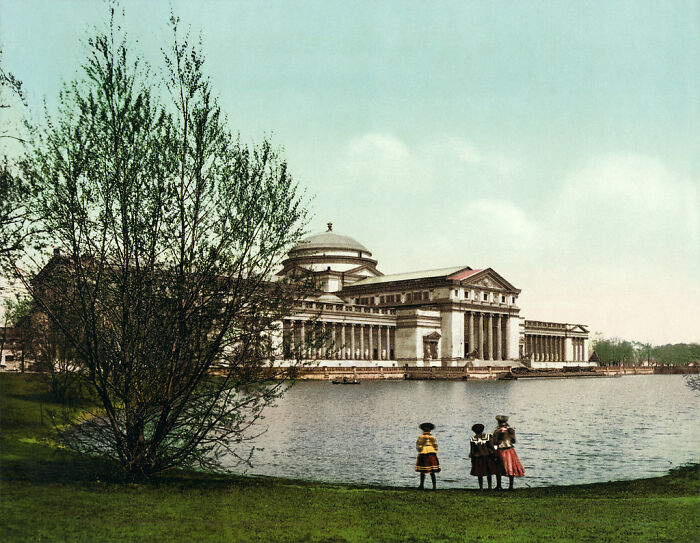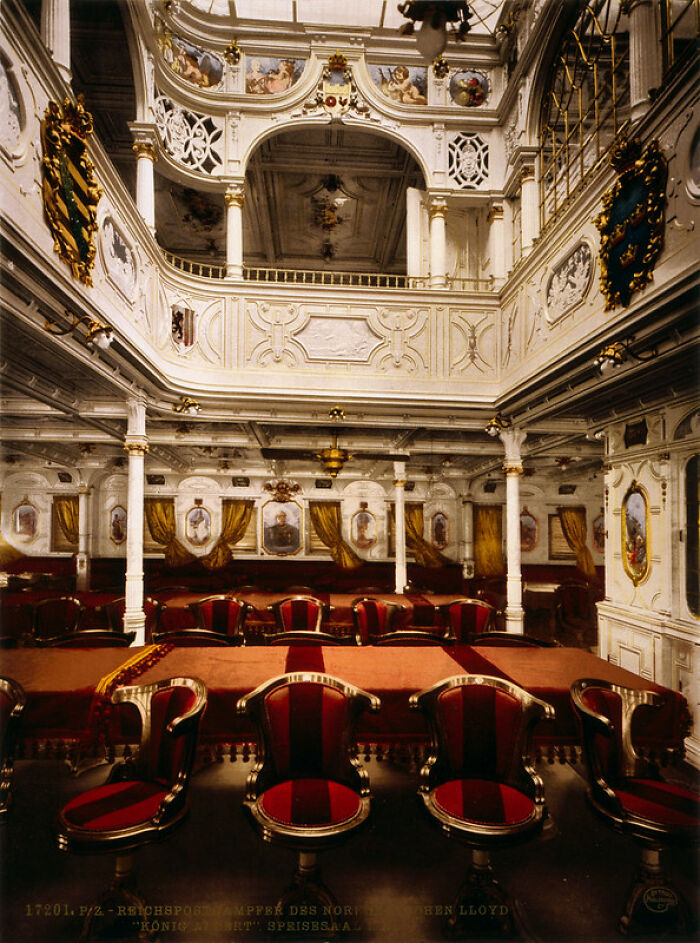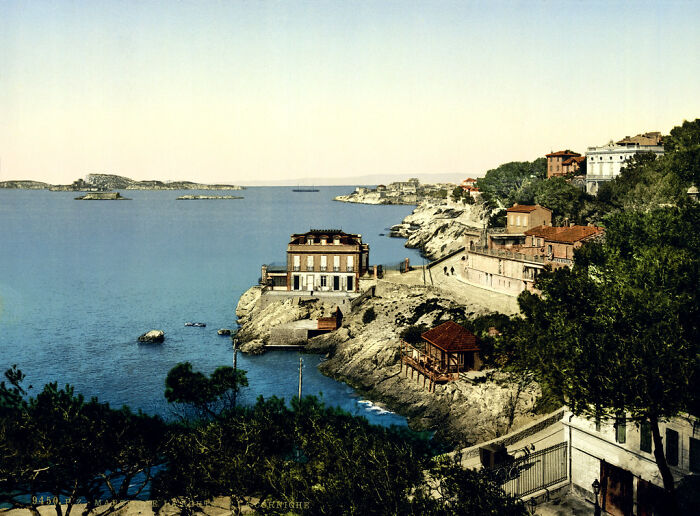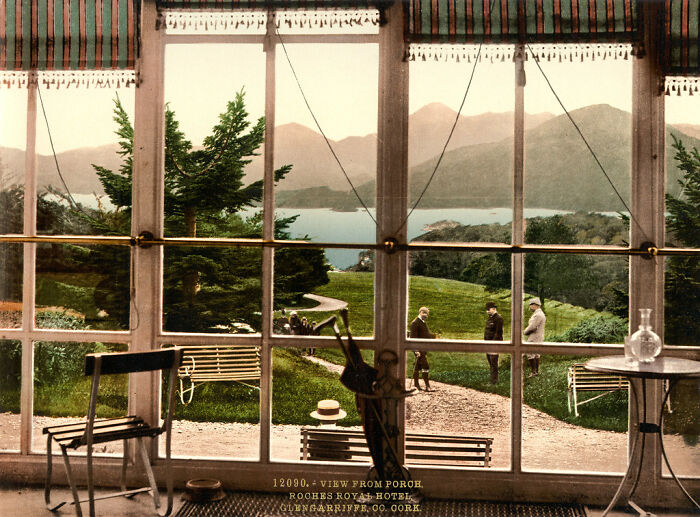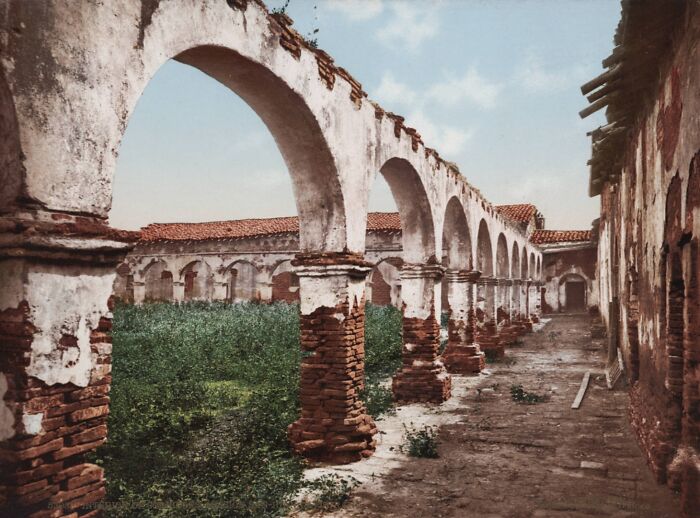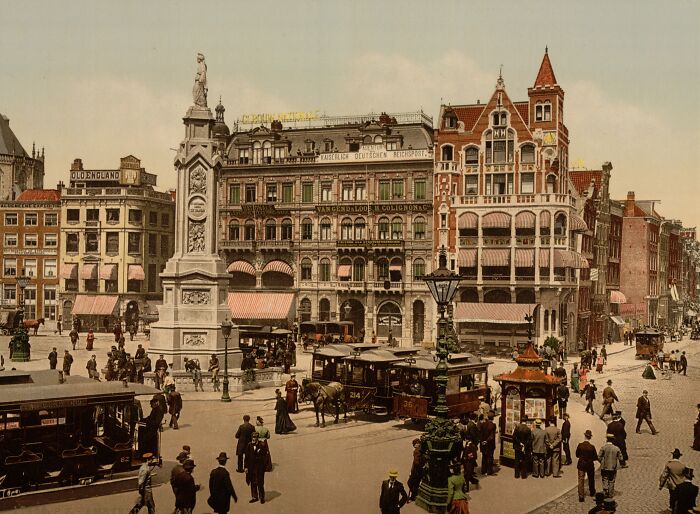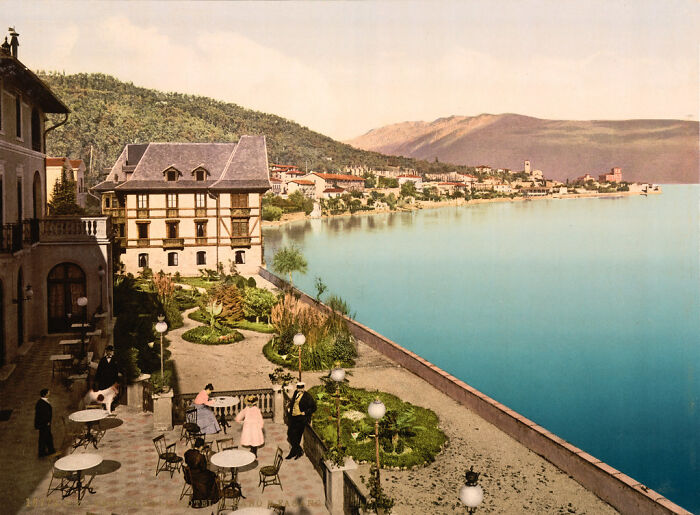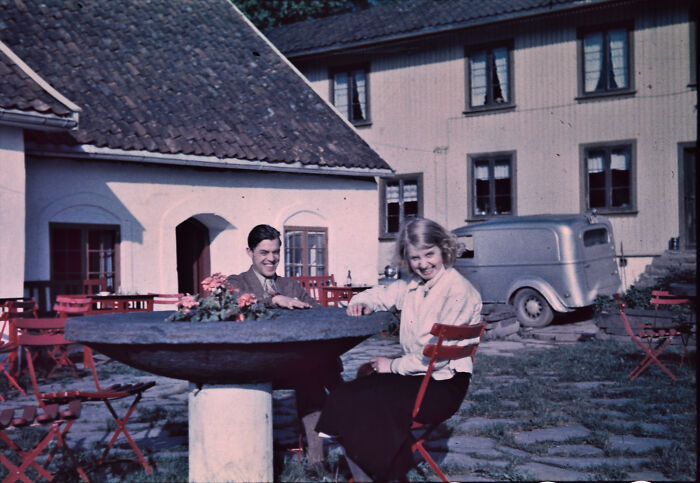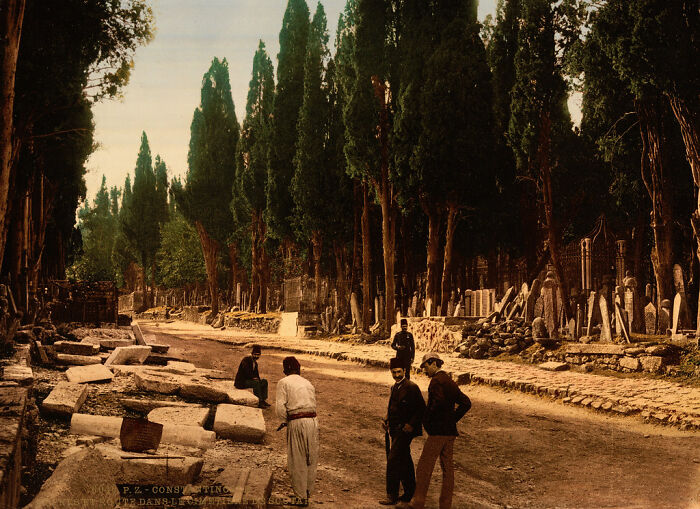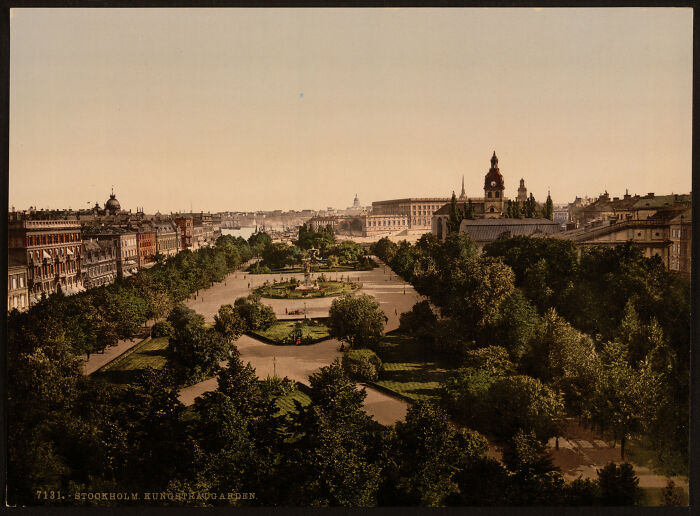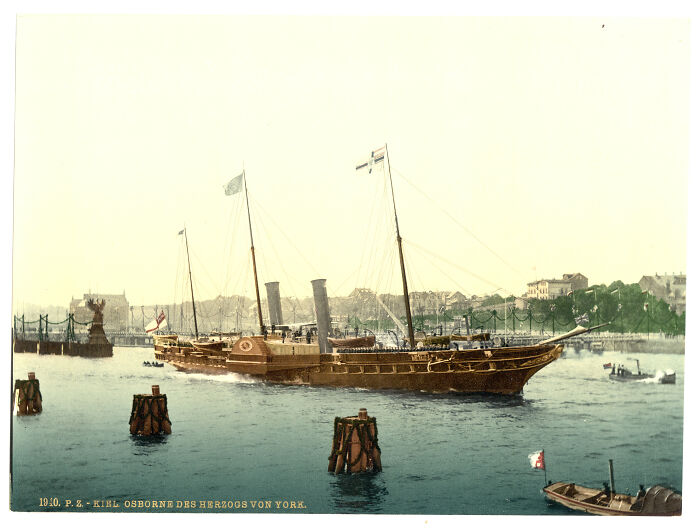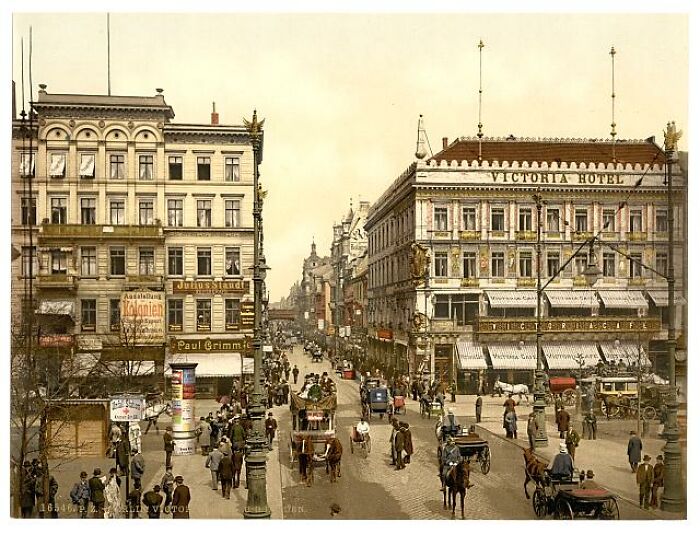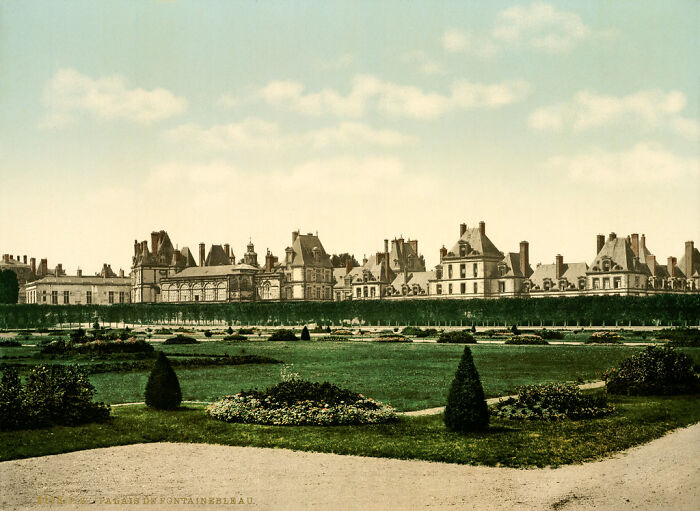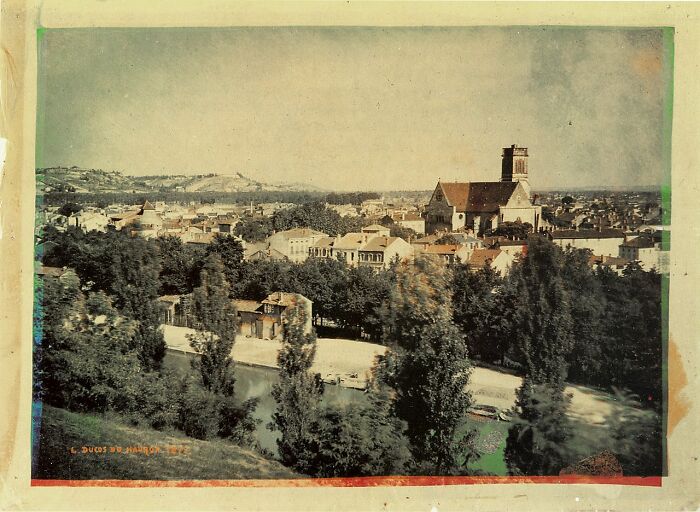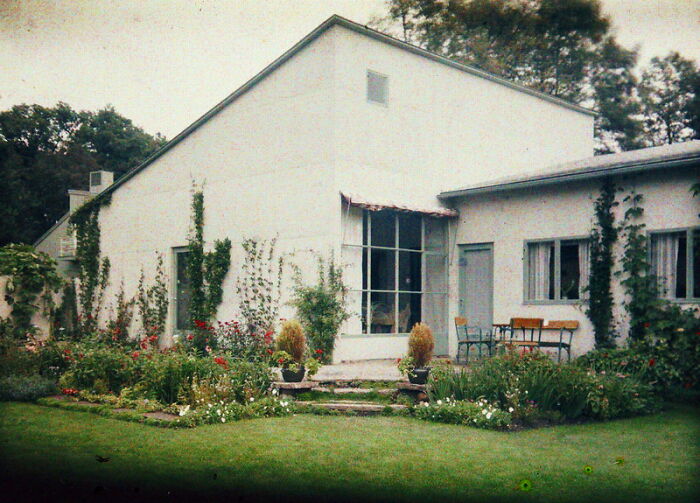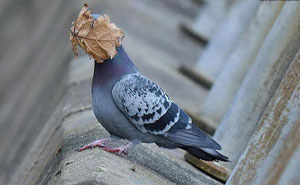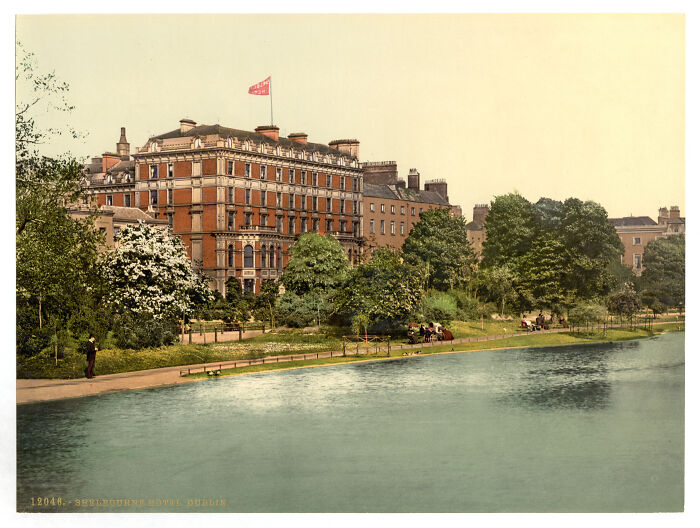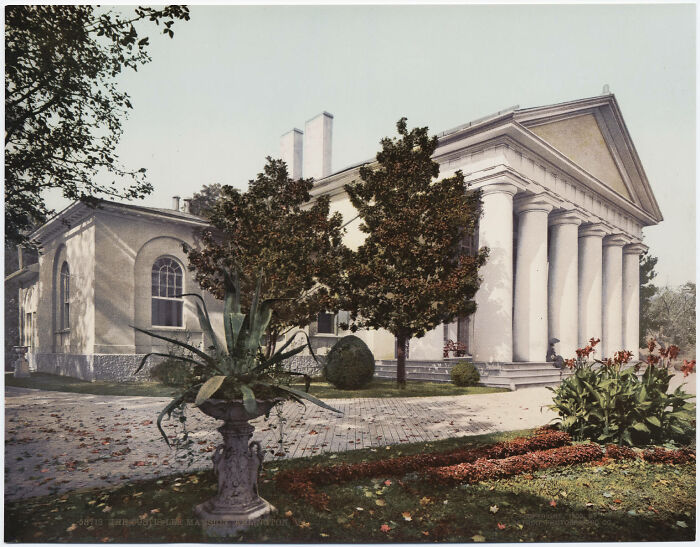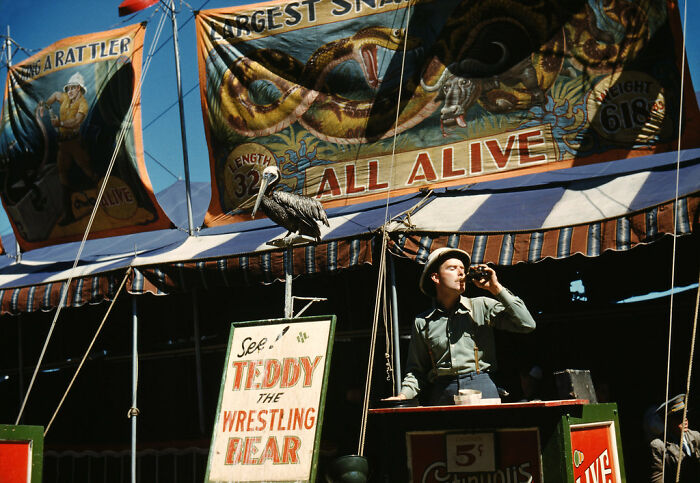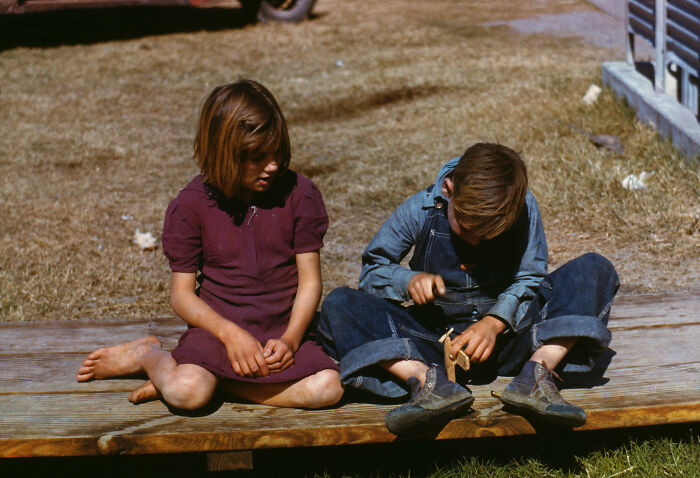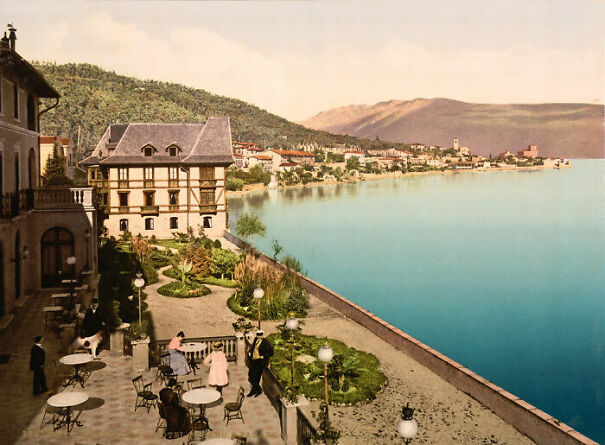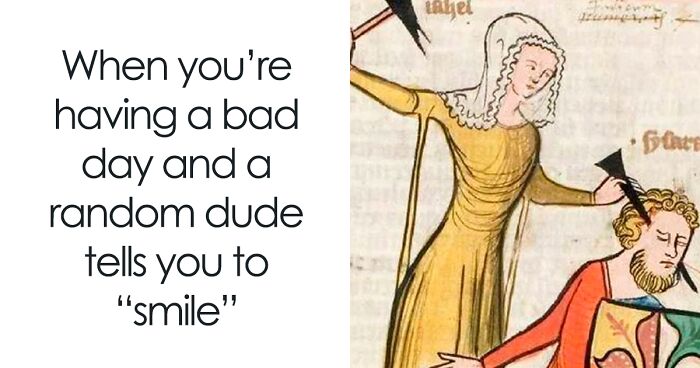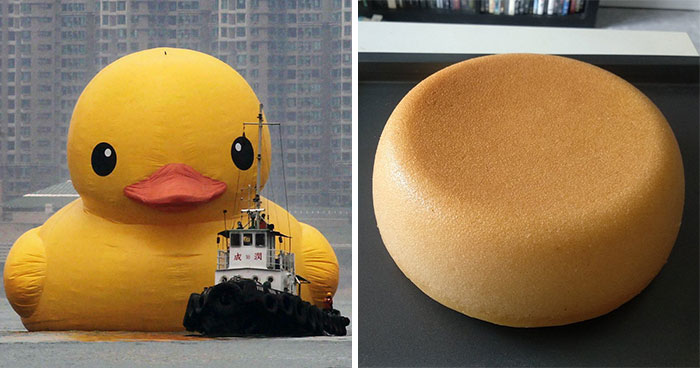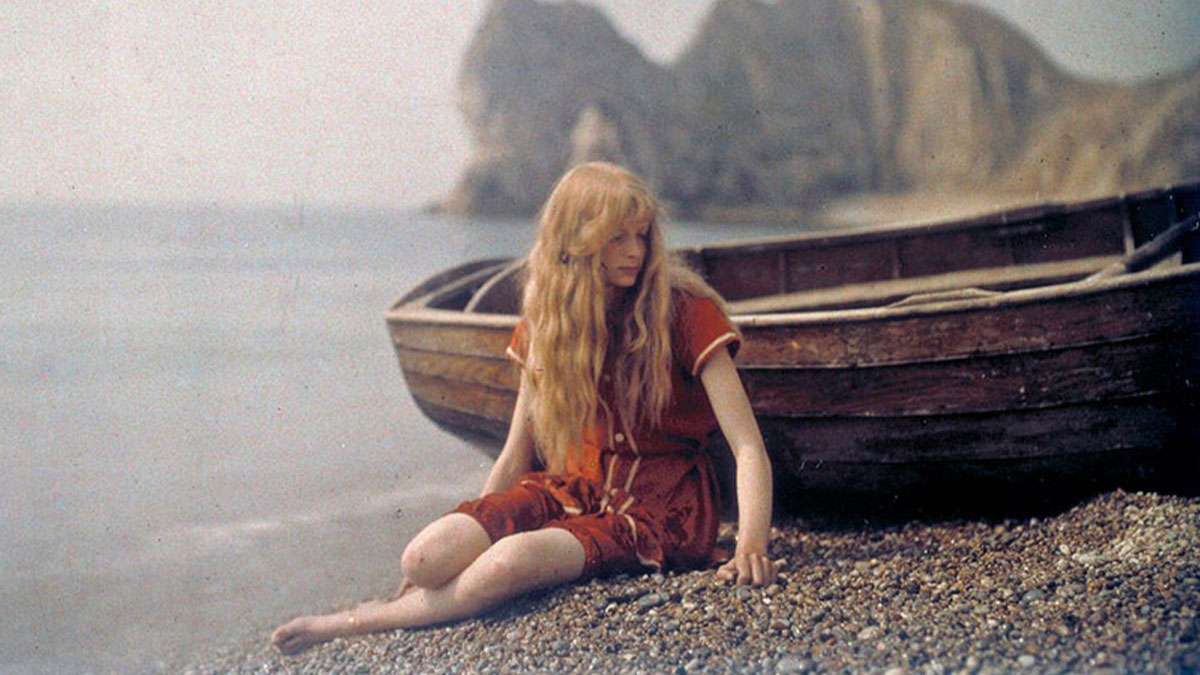
30 Color Photos Photographers Took 100 Years Ago That Still Mesmerize Us Today
Interview With ExpertI don't know about you, Pandas, but I love period dramas. They're like a window into the past: we can see how people looked and lived a hundred or even more years ago. However, they're often just interpretations of the past.
Why opt for how someone imagines what the world looked like when you have photographs that can show you? That's why we've put together a list of some of the oldest color photographs so we can all marvel at the ingenuity of photography and feel closer to the history of the places we now live in.
To learn more about the processes of the fascinating history of color photography, Bored Panda reached out to Mark Osterman. He's a former photographic process historian for the George Eastman House International Museum of Photography and Film who teaches workshops in early photographic processes from Niepce heliographs to gelatin emulsions. Osterman kindly agreed to take us behind the scenes of the makings of color photography.
This post may include affiliate links.
Irish Spinner And Spinning Wheel. Co. Galway, Ireland, 1890
Christina In Red, 1913
Milksellers, Brussels
Historians date the oldest photograph to 1826 France. At least that's the oldest one that we know of today. That's when Joseph Nicéphore Niépce started experimenting with a camera obscura and took a snapshot of the view outside his window.
Scottish physicist James Clerk Maxwell took the world's first colored photograph. He experimented with red, blue, and green filters while photographing a ribbon. By projecting all three images onto a screen simultaneously, he was able to recreate the original image of the ribbon.
Winter Garden, Nice, France, Ca. 1895
It reminds me of a structure in one of the gardens (I think Fitzroy) in Melbourne that I've always wanted to go in but never have. I think it was often closed when I was in the area.
Port Of Venice, Italy, Ca. 1889
London, Kodachrome
As evident from Niépce's and Maxwell's experiments, and as photographic process historian Mark Osterman told Bored Panda, the processes behind colored photographs were virtually unknown to the general public. "They were experimental," he explains.
However, what Maxwell did back then isn't so far off from how we get color photographs with our cameras and phones. "If you look at your computer or phone camera screen with a strong magnifier, they both rely on exactly the same technology," Osterman explains.
East Face, Mont-Saint-Michel, Normandy, France, Ca. 1895
Tour Eiffel & Exposition Universelle, Paris, France, 1889
Singers' Hall (Music Room), Neuschwanstein Castle, Upper Bavaria, Germany, 1886
"You will see red, green, and blue lines," he goes on. "The other colors are based on those lines being next to each other. For instance, yellow is a virtual mixture of red and green lines next to each other. White is actually all three colors next to each other!"
Agra, Taj Mahal
Luce Ben Aben, School Of Arab Embroidery, Algiers, Algeria, Ca. 1899
Neuschwanstein, Upper Bavaria, Germany
French brothers Auguste and Louis Lumière were the first to patent the autochrome: a method of color photography. What is the autochrome, exactly? It's when plates are covered in microscopic red, green, and blue grains of starch, and when light passes through them, it combines to recreate a full-color image of the original.
Photochrom Print By Photoglob Zürich, Between 1890 And 1900
Just soaking up how there's no cable wires and phone lines criss crossing the scenery. Roads but no motor vehicles. No lawnmowers to be heard.
Photo Family Hungary - Kapeller
Fingal's Cave, Staffa, Scotland
Even though the autochrome was patented in 1903, that doesn't mean that it was readily available to the public. "Only affluent amateur photographers were shooting them aside from the professional photographers, who worked for the National Geographic Magazine," Osterman told us. "This was because the color transparency plates could be used to produce three color printing plates to make full-color ink-printed reproductions in their magazines."
Mulberry Street, New York City
Townhall, Hildesheim, Lower Saxony, Germany
Promenade And Grand Salon, Trouville, Normandy, France, Ca. 1895
Cue the "People were always so elegantly dressed back then"-people....
"There was a two-color process invented around 1913 by Kodak that used two glass plates in contact with each other, one being red-orange and the other being green-blue," Osterman goes on. "Called the two-color Kodachrome process, it was beautiful, but the dyes being from Germany and the US entering the war made it impossible for Kodak to put the process into production. None were sold."
Folgefonn Glacier, Hardanger Fjord, Norway, Ca. 1897
Oudezijds Kolk, Amsterdam, North Holland, The Netherlands, Ca. 1901
The Colosseum, Rome, Italy, Ca. 1896
"The product name Kodachrome resurfaced in the 1930s with a three-color chromogenic process, a variant that we still use today," Osterman continues. While these 35 mm color slides (aka transparencies or diapositives) were known in the 1930s by both Kodak (US) and Agfa (Germany), only the amateurs were using them."
Field Columbian Museum, Jackson Park, Chicago, 1901
North German Lloyd Mail Steamer König Albert, First Class Dining Room, Ca. 1910
Oberammergau, Upper Bavaria, Germany
I love this place. They are known for their passion play (Oberammergauer Passionsspiele). I'm not religious so that didn't interest me, but the area is beautiful. Great restaurants, nice people, and shops that offer unique Christmas ornaments for our tree. (we collect ornaments from place we travel to)
People had to wait for the war to end for color films to appear on the market. "It wasn't until after WWII that color films were widely available for everyone and professionals started using them in publications," Osterman says. "By the 1960s, portrait studios were routinely offering color photographic prints from color negatives."
La Corniche, Marseille, France, Ca. 1895
It took a while but I found the place now on google and it doesn’t look too different, not too much development around it
Roches Royal Hotel, Glengariff Harbor, Ireland, Ca. 1895
Interior Of Corridors, Mission San Juan Capistrano
Most amateur photographers and perhaps even some professionals might not know that all color plates, films, and papers are actually coated with black and white gelatin emulsions. "The image is taken by that black and white sensitive emulsion and the color becomes visible during processing," Mark Osterman explains to Bored Panda. "After the color image is established, the black silver-based image is dissolved away, leaving the color behind."
The Cathedral, Amsterdam, Holland
Cathedral? What a strange name. Amsterdam has no cathedral. It is a picture of the Dam, the main square of Amsterdam. The monument you see on the left (Naatje van Amsterdam) has been demolished because of the bad state it was in.
Panorama Of The Seven Bridges, Paris, Ca. 1895
My brain saw the Ca. - read California - said "Not California" - oh, yes Paris.
View From The Hotel Fasano, Fasano, Lago Di Garda, Italy, Ca. 1895
BP no longer stands for "Bored Panda", it stands for "Behind Paywall".
Must I subscribe? And to think i was just telling someone how Bored Panda was a bastion of the old style Interwebs.. Thanks , but no thanks my guys..
I hate to break it to ya, but most of these "colored" photographs were actually hand colored black & white photos.
Not subscribing to read free material. Don't need my info!! Old pics were great! Like to see more!
30 Color Photos Photographers Took 100 Years Ago So, so many of these were paintings. You can't pass of paintings as accurate historical photos. Then you put a paywall on it. I'm trying to figure out who is in the middle of your marketing Venn. Poor form BP
Bp there wasn't colour cameras back then. Thee have been colourized
The first colour photo was taken in 1861, so no, not all of these are colourized. I do have my suspicions about a few of them though.
Load More Replies...I would have preferred the original black and white photos. The colorization makes them look fake.
BP no longer stands for "Bored Panda", it stands for "Behind Paywall".
Must I subscribe? And to think i was just telling someone how Bored Panda was a bastion of the old style Interwebs.. Thanks , but no thanks my guys..
I hate to break it to ya, but most of these "colored" photographs were actually hand colored black & white photos.
Not subscribing to read free material. Don't need my info!! Old pics were great! Like to see more!
30 Color Photos Photographers Took 100 Years Ago So, so many of these were paintings. You can't pass of paintings as accurate historical photos. Then you put a paywall on it. I'm trying to figure out who is in the middle of your marketing Venn. Poor form BP
Bp there wasn't colour cameras back then. Thee have been colourized
The first colour photo was taken in 1861, so no, not all of these are colourized. I do have my suspicions about a few of them though.
Load More Replies...I would have preferred the original black and white photos. The colorization makes them look fake.

 Dark Mode
Dark Mode 

 No fees, cancel anytime
No fees, cancel anytime 





